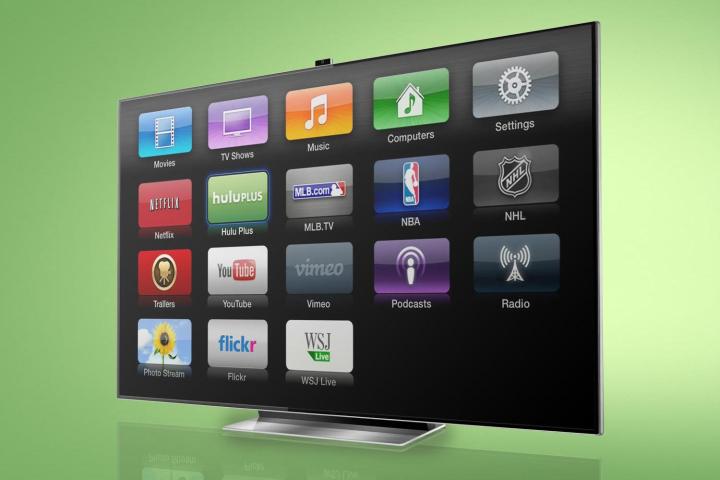
Before his death, Apple CEO and tech visionary Steve Jobs claimed he had “finally cracked” the Internet TV conundrum, claiming his system would seamlessly sync with all of your media devices, over “the simplest interface you could imagine.” For years, many thought Jobs’ solution pointed to an Apple-designed TV, with multiple services infused into the device. But Apple’s rumored talks with Comcast recently have many wondering if Jobs’ vision of a new way to watch TV is close to fruition, in the form of a simple set-top box.
According to a report by the Wall Street Journal, Apple is in talks with Comcast to secure a place for its new device, which is rumored to meld streaming services and apps, iTunes content via its cloud services, and both live and on-demand TV, into one simple interface. In order to assure its new internet-TV wunderkind will work fluidly with current delivery methods, the company is in negotiations to strike-up a partnership with the nation’s largest Internet service provider in hopes of securing its own fast lane into living rooms.
However, unlike Netflix, which recently made a highly controversial agreement with Comcast to similarly secure more efficient streaming, Apple appears to be looking for a better deal. According to the Journal’s sources, Apple is hoping to get a clear path to what ISPs call the ‘last mile’ of network pipelines, gaining access to the more congested side of the bridge that connects the Internet directly into the homes of subscribers.
Apple is by no means the first company to make a run at pioneering a sparkling new form of Internet TV. Several companies have tried, and thus far, failed at shaking up the current TV delivery paradigm, including a much-maligned set-top box by Intel called OnCue.
The OnCue system was touted by Intel to be “the best Internet television service ever,” but folded in on itself like a dying star after the company was stonewalled by television content providers, afraid to upset their lucrative relationships with Multi-system operators such as Comcast and Time Warner Cable. The box was eventually purchased by Verizon’s Fios arm at cost (cost being somewhere shy of half a billion dollars) and has gone nowhere since.
With its own system, it would appear Apple has learned from the perils of those who came before it about fighting the MSO iron curtain, bringing its clout and its knack for design straight to the MSO door step. For Comcast’s part, the much-loathed company could ally itself with one of the most beloved corporations (by American’s anyway) around, as well as gaining a much needed revamp for delivery of its own services in the deal.
After all, with a host of billion-dollar corporations looking to solve the Internet-TV riddle by chipping away at the current archetype, and agreements such as Dish Network’s deal with Disney to offer Disney content online without a subscription, cable titans like Comcast have seen the writing on the wall. The proposed shifting of the guard to a more efficient way to watch TV no longer raises questions of if it will happen, but when. In such a case, it’s best to make plans for the future.
WSJ’s sources say that Comcast and Apple are still in the early stages, reportedly in a tug-of-war about who will retain control of how users will access the new box, how the system will be implemented, and at what price services will be offered. Apple still has to secure its own agreements with content providers for programming, which, as Intel and countless others can attest, is no easy task. And you can be sure that Comcast won’t sign on for any deal that threatens its lucrative cable bundles, DVR rentals, etc., without compensation. Big cable will not go gently into that dark night.
There’s also the issue of net neutrality at play which, according to the Journal, could stifle the proposed super-pipeline to the living room of Comcast subscribers that Apple hopes to secure. Both companies will be walking a tight-wire to make such a deal happen without creating an unfair advantage to other parties in the streaming marketplace.
Still, reports of the possibility for an Apple-designed Internet TV ecosystem are heartening, especially to those who have seen the massive failures that have come and gone in recent years, as so many companies, from Samsung to Google, have tried and failed to grab the brass ring of online media.
We’ll have to wait and see what kind of compromise the two mega-corps can agree to, and just how much of Apple’s own vision for its new service it can retain in the bargain. As for now, the wheel’s still in spin.


